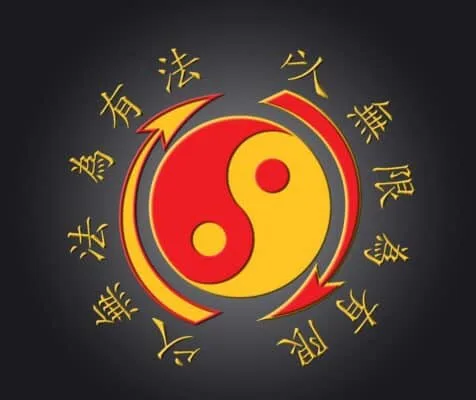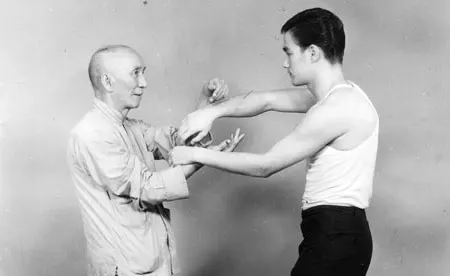
Jeet Kune Do(JKD) is not only a martial art style, but a philosophy that was founded by the legendary Bruce Lee. In 1971 Bruce Lee wrote an essay entitled “The Tao of Jeet Kune Do.” In it, he described his martial art and philosophy. Does Jeet Kune Do still have relevance, and is it a practical martial art today?
Jeet Kune Do is effective. Its effectiveness lies in breaking traditional rules of martial arts, making use of what is effective and useful rather than fighting according to a prescribed set of rules. The focus is to anticipate, intercept and use your skill to counter without hesitation.
Jeet Kune do is so much more than just a combat style, which was the intention of the philosophy by its founder Bruce Lee. He saw the value in techniques from many different fighting styles, and he incorporated these into his own fighting style and adapted them to be effective without the need to fight according to rules.
What Is Jeet Kune Do?
Jeet Kune Do, or JKD, is a Martial art expression that was developed by famed martial artist Bruce Lee. It was this style, or rather the philosophy behind the style, that has resulted in many people referring to Bruce Lee as the father of modern MMA. If you want to learn more about what makes Bruce Lee the father of MMA, see my article on Bruce Lee – Why He Is Considered The Father Of MMA.
Bruce Lee struggled to put a name to his martial art expression because he felt that it would limit the philosophy behind his martial art, which went directly against the essence of the philosophy. He went back and forth between various names before settling on Jeet Kune Do in 1967.
The translation of Jeet Kune Do is “Way Of The Intercepting Fist,” where the keyword in the name is “Intercepting.” The philosophy behind “Intercepting” was considered to be applicable not only to combat-style fighting but also mentally, physically, and spiritually.

The requirement of Jeet Kune Do is to train oneself in all aspects of life, both mental and physical, to cultivate oneself to the point that you have all the tools necessary to face any given situation.
The idea is to equip oneself to the point that when faced with any situation, you can draw from your experience, knowledge, and training to “Intercept” the situation and use the tools you have available without needing to think about it.
The core philosophy around Jeet Kune Do is “using no way as way; having no limitation as limitation.” This implies learning from multiple sources, absorbing what you find useful, rejecting what is not, and adding your own experience to it.
What Does Jeet Kune Do Focus On?
Because of this philosophy around Jeet Kune Do, Bruce Lee incorporated moves and techniques from multiple other martial arts that he believed had merit and usefulness but not incorporating the techniques that he deemed not useful.
The focus of Jeet Kune Do is that your fighting style is personal, and each person will find different things useful from other styles than what Bruce Lee did. The key to JKD is to always be learning, always improving, always adapting, and growing. This means your martial art style may change over time as you change.
The focus of JKD is a combination of philosophy and practical fighting techniques, and skill. The primary focus is on the philosophy since if you grasp this aspect, you will be open to learn from any martial art style and grow your fighting style by incorporating components into your own style.
There is no focus on rigid or prescribed moves and patterns in JKD. The focus is on adaptability. The techniques that are taught are intended to change the way you approach martial arts from prescribed movements to anticipating or intercepting your opponent’s moves and attacks.
Is Jeet Kune Do Still Effective?
The combat style of Jeet Kune Do is effective because the foundation of the style are moves that Bruce Lee adapted from other styles and brought them into his philosophy, which allowed him to improve on them rather than stick to the prescribed execution of the technique.
Much of the techniques developed for JKD were to make the style effective for real-life combat situations. This meant being able to adapt your style to the situation and use different moves and techniques dictated by the situation rather than by your learned fighting style.
Because JKD was developed for street fighting, the techniques taught as part of this style are definitely still relevant and effective today. However, the philosophy of not sticking to a single “way” but developing your own adaptations are still relevant and is the foundation philosophy of modern MMA.
Is Jeet Kune Do The Best Fighting Style?
It is difficult to classify any one martial art or fighting style as “the best” fighting style since they all have their strong points and flaws. The very thought of proclaiming JKD as the best fighting style goes against the philosophy of the martial art.
According to the philosophy, there is always room to improve and learn new techniques and to adapt and evolve.
JDK is certainly one of the best fighting styles because of its practical application, strikes that are designed for real-world situations, low kicks that are difficult to counter, and efficient use of your energy. One of the core aspects of the martial art that makes it very useful is learning to anticipate your opponent’s moves.
The combination of the moves taught as part of JKD and learning to anticipate and intercept make Jeet Kune Do a very effective martial art to learn for self-defense.
Is Jeet Kune Do Deadly?
All martial arts and fighting styles have the potential to be deadly; it all depends on the attitude of the fighters involved. Jeet Kune do was developed to be an effective fighting style that can be used in self-defense.
Jeet Kune Do can certainly be deadly, especially if the student has focused on learning and mastering the strikes taught in the martial art. All fighting styles have the underlying capability to cause serious injury and even death, depending on the intensity with which the combat techniques are performed.
Is Jeet Kune Do More Effective Than Wing Chun?
Wing Chun is a classical martial art that has very strict rules and disciplines in the fighting style. It has prescribed movements and techniques, fixed positions, forms, and movements and relies on a straight-line attack and defense.

Jeet Kune Do is better than Wing Chun, especially in a real combat situation, because it is more adaptable and fluid, and there are more techniques that are taught as part of the style. Jeet Kune Do incorporates some Wing Chun techniques, but they are performed without the rigidity of rules.
The key of JKD is effectiveness rather than adhering to a set of traditions and rules in a fighting style. This makes JKD more fluid and effective in more situations than Wing Chun.
Is There A Difference Between Jeet Kune Do Vs. MMA?
The key aspect where Jeet Kune Do and MMA meet is in the philosophy. MMA incorporates many different fighting styles, and the fighters learn many different martial arts and other fighting styles to compete, and JKD incorporated techniques from other styles.
The difference between Jeet Kune Do and MMA is that MMA is a sport that is governed by rules, and the techniques that are used in the sport can only be used within the confines of the rules. JKD has no rules, and any technique that is useful is incorporated.
JKD is not governed or limited by rules that would contravene a sporting code, which makes it different from MMA, where opponents must remain within the prescribed guidelines of the sport.
Is Jeet Kune Do Hard To Learn?
JKD is a martial art that emphasizes simplicity and function rather than form and technique. This makes it easier to learn some of the techniques used in JKD because there are no hard-and-fast rules. As long as the way you execute the technique is effective, you are good to go.
You can make progress quickly in JKD as long as you are diligent in your training and practice. The essence of JKD, however, is that you never stop learning and improving. You can learn techniques within a few weeks to be able to defend yourself, but the style is a lifelong journey.
This is not to say that it will take a long time to learn effective techniques, just that you will never stop learning, adapting, and improving in the style.
Is JKD Still Taught?
Many may consider that JKD died when Bruce Lee passed away, but this is not the case. Many of his students have pursued the philosophy and the training they received from Bruce Lee and developed schools that train with the same principles.
JKD is still taught today. It is one of the martial arts that many MMA fighters focus on for the aspect of anticipating an opponent. Due to the flexibility of the style, trainers train their students in JKD differently. The World JKD Federation seeks to promote the philosophy of Bruce Lee’s original art.
Bruce Lee’s untimely death left the world without any formal teaching from the master himself, but the students that he taught have tried to continue with his work and development of the style. However, many of his students also admit that they still do not fully understand everything that encompasses JKD.
Conclusion
JDK is an extremely effective martial art that is one of the most useful styles to learn for self-defense. It teaches you to not only fight from a prescribed set of rules but to adapt your style to effectively counter your opponent.
Many people enjoy learning Jeet Kune Do because of its lack of traditional rules and formalities, bringing a level of freedom to martial arts that many other styles lack.
